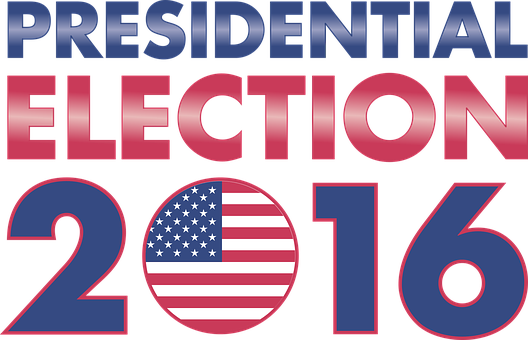
While determining the winner of the presidential election matters to American democracy, public relations professionals don’t need to wait for the ballot count — the votes (and the lessons) are already in. Because of the global attention focused on the election, the resources devoted to communicating during the campaign, and the peculiarities of the election itself, PR and marketing professionals (and those we serve) should consider what this presidential election can teach us about how we communicate in our roles as professionals.
Here are the top five PR lessons the WordWrite team has learned from this election:
1. Is coarse dialogue now OK? Well, if it’s authentic . . .
Donald Trump. He’s cursed, used derogatory words, belittled people, offended entire communities and mocked a handicapped journalist. Filter? What’s that?
It’s safe to say we’ve heard it all this election, and not just from Donald Trump, but from Hilary Clinton, supporters of both camps, news commentators and everyone with an opinion. Harsh words and coarse dialogue have become so much more commonplace; some don’t even bat an eye anymore. Are we immune or hardened? Probably not.
Some believe such dialogue, while it may be vulgar or inappropriate, is considered more “real” and honest. As a society, we tend to pause when someone appears too rehearsed or fake. We label them as being inauthentic and disregard what they are saying as false. Or, we believe they have an ulterior motive or an agenda. In reality, most people, and certainly politicians, do have an agenda.
In the business world, trust and authenticity are paramount to success. Your employees, customers, clients, business partners and the public need to believe you are who you say you are and they will judge you not by your words alone but by your actions. This isn’t to say you should be harsh for the sake of appearing “real,” however it’s a trap when you try to be all things to all people. Inevitably, someone will see through the façade. The best bet is to be your authentic you. Those who believe in you and what you do will follow. We may not like it, but it’s working for Donald. At least it appears to be…
— Hollie Geitner
2. To be hacked or not to be hacked – that is the question
Is Julian Assange a journalistic hero or a Kremlin puppet? Does WikiLeaks hate Hillary Clinton or is it simply serving the public interest through its daily dumping of emails from her campaign?
Someday, in some capital of punditry far away, these issues will be settled. For now, PR pros and the people and organizations we serve should immediately do two things:
First, remember that old PR adage, “Never say anything you wouldn’t want your mother to read on the front page of the New York Times.” It’s amazing how much less interesting the WikiLeaks affair would be if Clinton campaign staffers weren’t so careful (careless?) to document their every criticism and negative thought in electronic writing. What can PR pros and the people and organizations they serve learn from this? Make sure internal and external communications – with rare exceptions – can pass the New York Times test.
Second, there are rare exceptions when internal communication must be blunt. And for that reason, it’s time to revisit the security of your social media channels, cellphones, portable devices, servers, etc., etc. Make it a routine, a habit. In large measure, good crisis communication is about managing risk to ensure that crises don’t happen. Do you think the Clinton campaign had enough internal discussions about the risk of a server hack and the damage from an information leak?
For PR pros and those we serve – don’t wait. Take action now. Or else you and your organization may be learning a lot more about Julian Assange or someone like him.
— Paul Furiga
3. Social media: Here to stay but a sometimes hazy reflection of truth
Whether it’s used as a binding force to connect likeminded voters, or leverage for candidates on the debate stage, social media has played a tremendous role in this election, especially with younger age groups.
And with much of today’s political dialogue occurring on social media, we have to ask: Is this the new norm? Is it valid to judge a candidate solely by his or her social media presence? Will social media eventually take the place of traditional media in terms of serving as a public watchdog?
Social media provides users with the unique opportunity to become a content publisher, which can have both positive and negative ramifications on a political campaign. On the positive side, social media channels give candidates a new way to engage with voters in a hyper-personalized setting that’s built for conversation. In addition, these platforms allow the public to share their views with others, and rally behind a cause – creating a sense of inclusion, and even a heightened feeling of patriotism. A study conducted before the 2012 election concluded that social media can have a positive impact on voter turnout.
Yet there are several negative consequences to our ultra-connected campaigns, and a recent analysis found social media can often expose slanted views or political biases. Average users tend to believe that messaging served up to them on social channels is a clear depiction of what the macro digital world is seeing, when in actuality, the content they receive is driven by their previous activity.
In other words, just because I believe I see more messages in support of my candidate when scrolling through my Facebook feed, doesn’t necessarily mean he or she is ahead in the polls, but this type of activity could in fact affect my decision as a voter. And, opinions showcased on such platforms can often influence those who are intended to be impartial during an election, such as media personalities.
— Erin O’Connor
4. Facts alone don’t matter to voters
Americans won’t accept opposing political viewpoints, even when confronted with enormous factual evidence to the contrary.
That phenomenon didn’t start with this election.
Since the mid-1980s, numerous studies have revealed how attempts to refute false information backfire and lead people to hold on to their misperceptions even more strongly.
Christopher Graves, the global chairman of Ogilvy Public Relations, reviewed the research for a February 2015 article in the Harvard Business Review.
Graves observed that we tend to believe news that validates our world view and dismiss news that goes against it. Trying to convince others of how wrong they are actually makes them dig in their heels even more, even if you’re relying on facts. People “remember the assertion and forget whether it’s a lie.”
So how do we change someone’s mind?
Graves points to professor Stephan Lewandowsky’s findings in “The Debunking Myth Handbook” for one possible answer. Debunking a myth isn’t enough. It leaves a narrative vacuum, so you must create a credible alternative narrative.
This research highlights the challenges PR professionals face in moving hearts and minds.
However, it also gives us hope that the key to influencing public opinion resides in one of our core tenets at WordWrite – our belief in the value of an authentic story, fluently shared and continually measured to ensure you’re engaging your audience.
— Jeremy Church
5. Journalism evolves in pursuit of its Holy Grail
Thanks to the 2016 presidential election, the objectivity of certain sectors of journalism has been called into question and may never be the same.
Pundits and the research agree: certain news outlets lean one way or another on the political spectrum. That’s nothing new, but this is the first election where mainstream presidential candidates have called the media out on bias. Republican presidential nominee Donald Trump has repeatedly accused the media of being dishonest.
The debate has been fueled by a recent Center for Public Integrity report, which found that 480 journalists and employees of major news organizations made political contributions this election cycle, most of them to the Clinton campaign. The simple fact that these practices are being discussed by everyday people during this election season indicates that citizens are acquiring a more critical eye for bias in the media – which can be a good thing!
This election shows journalism is a constantly evolving practice. Objectivity is and always will be the holy grail that all good journalists seek. Objectivity is also something consumers strive for, and journalists that strive for objectivity have the opportunity to gain new adherents after this election.
This is an important lesson for PR professionals or anyone who wants to communicate in the post-election environment to come: We all crave authenticity, a fair presentation of a cause, issue or even product or service.
— Sam Bojarski
Those are our top five PR lessons from the 2016 presidential election – what are yours? Please share them in the comments below!
Photo credit: Pixabay / Maialisa
